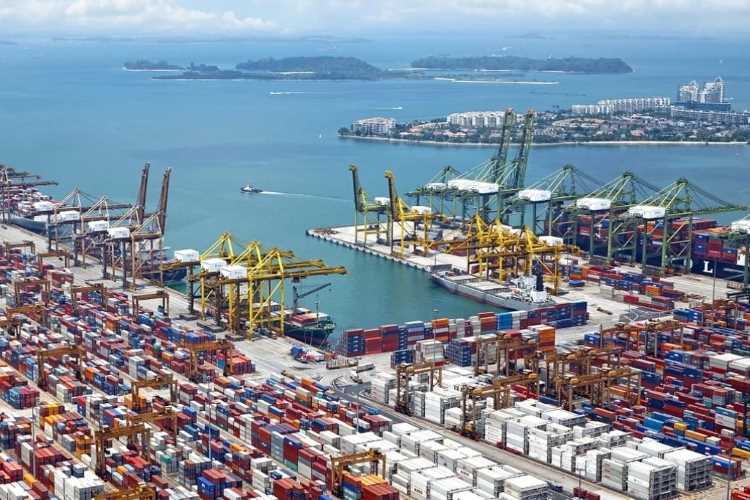
By Anjali Tandon
Foreign trade policy and employment: With a major share of international trade being increasingly realised at intermediate goods level, the overall employment effect on an economy has undergone a change. On the one hand, the outsourcing of activities to developing countries like India offers employment opportunities in labour-intensive industries and the service sector. On the other hand, import-competing manufacturing of intermediate goods faces employment displacement. Consequently, labour demand (or employment creation) is affected in industries using imported intermediates, as well as in import-competing industries. Simultaneously, expansionary activities are expected in competitive sectors that are able to benefit from technological change.
If a product-specific trade policy (like imposition of tariffs) is used to protect jobs, a counter response is observed elsewhere in the economy. Given the low worker mobility across sectors (due to mis-match in skills and limited movement to other regions), the labour market adjustment to a liberal import policy is generally slow and tends to show an immediate loss of jobs. However, the adverse effect can be more than offset through employment opportunities from a concomitant export expansion or worker absorption through skill upgradation programmes. Thus, what bears relevance for employment outcomes is the aggregate effect, and not the sector-level effects. The adjustment process should be left to labour market institutions that can be designed to address the issue in a more specific manner.
READ I Scrappage policy: A big business opportunity awaits India
Foreign trade policy and employment
Nevertheless, employment concerns arising from trade patterns are particularly grave for labour-intensive economies like India that have not been successful in capitalising on their traditional sectors. In view of the adoption of capital-intensive methods of production, the decline in employment intensity of both exports and imports is natural. However, the decline in employment intensity of the overall export basket has been more pronounced in comparison with overall imports, indicating that exports have turned relatively more capital-intensive over time. Notwithstanding this decline, the employment intensity of exports continues to remain higher than that of imports, suggesting the employment potential of the aggregate exports in the economy.
To evaluate the employment effect, it is additionally required to take into account the trade significance of the sectors. A high employment intensity (of an exporting/ importing sector) may not translate into a proportionate employment effect, if the sector has low trade volumes. An example is the wood product sector that ranks high in employment intensity next only to agriculture and allied sectors, but is positioned much lower in terms of the employment creation (i.e., number of jobs) from exports. This is due to the sector’s low significance within the export basket. Similarly, despite a lower employment intensity of basic metals & products, the sector accounts for relatively significant employment foregone in the economy.
Under an aggressive and unilateral liberalisation, two opposing forces have been in place. Greater exports support more employment, while higher imports have cost employment in the domestic economy. An increase in employment opportunities foregone as a net effect of the employment supported due to exports and the employment foregone on account of imports has been observed.
READ I India’s fledgling e-commerce industry needs a robust policy framework
Impact of restrictive foreign trade policy
The relative employment intensity of exports underscores its role in employment generation. An export strategy should be carved out for (i) continued export expansion of the preforming sectors, and (ii) restoration of the traditional exporting sectors in the basket. For the former, addressing non-tariff barriers (NTBs) in the international markets would be key. In fact, tariff liberalisation has minimal role vis-à-vis the NTB challenges faced by Indian exporters, as also noted from the India’s sub-optimal export performance even with its free trade partners as suggested in the recent document from the NITI Aayog.
For the latter, achieving cost competitiveness, (greater) export orientation and brand development are the way forward. The production linked incentive (PLI) scheme announced by the Narendra Modi government is a step in this direction as it partially offsets the cost un-competitiveness through refund of state levies and fuel taxes.
On the import front, the increasing employment forgone noted from the analysis, as also through its stronger indirect impact, should not be interpreted to advocate for (continued or higher) import protection in the long run. Past experience shows that import protection through foreign trade policy, without an industrial policy in place, can only be a temporary guard for employment. Although raising tariffs can be a source of interim employment relief, an industrial policy must be used to strengthen the domestic industry.
READ I $1.9 trillion US stimulus package to boost India growth, nudge inflation
A protectionist foreign trade policy without domestic competence can be harmful as observed in the post-Covid period in industries such as tyres and pharmaceuticals, which suffered from limited or costlier supplies when the Chinese imports were restricted. Therefore, the domestic industry must be brought on a strong footing, which cannot be achieved through raising tariffs alone. An industrial policy should be operative in tandem. The experience of Indian economy is in contrast with that of smaller Asian economies such as Vietnam where employment in both exporting and importing sectors increased under liberal policies and greater competition.
Another impact of curtailing imports without adequate domestic availability can be on export-production activities that have turned import-intensive over time. The possibility that the employment loss from exports is strong enough to offset the possible employment gains from higher tariffs cannot be ruled out.
Also, protecting import-competing activities can adversely affect (through crowding out) the employment available in export-producing activities. Hence, the foreign trade policy requires deep thinking on the multiple channels through which it can impact the economy. The employment shocks in the short-run will require active labour market polices in place. In the Indian context, this doesn’t seem to have happened.
(The author is Associate Professor, Institute for Studies in Industrial Development, New Delhi.).
